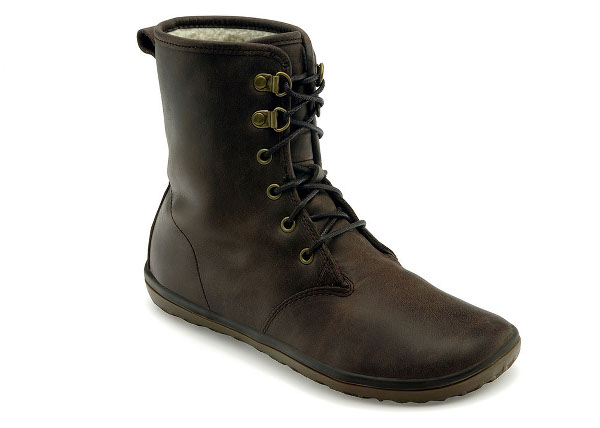Note: This article was originally published in February of 2014, but has since been updated to reflect the current state of affairs.
I have been wearing the VIVOBAREFOOT Scott for some time now and I have been very pleased with it. We first mentioned this shoe in the VIVOBAREFOOT winter range write-up in the fall of 2013. I wanted to write about the Scott's cold weather capabilities but winter hasn’t really started up in the part of Europe where I live (Toe Salad readers in North America will probably frown when they read this).
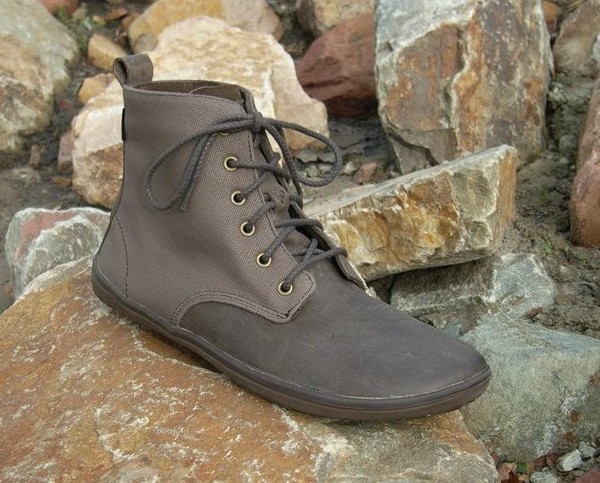
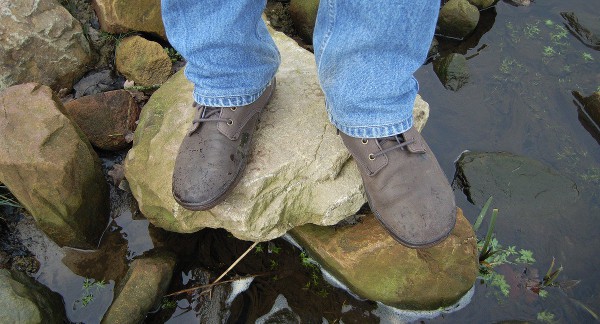
These shoes are one of the best models from VIVOBAREFOOT that I have worn so far. What I really like is that they leave a lot of room for my feet to move in the shoes while staying secure thanks to their ankle-high height. I also love the outsoles very much with their indented hexagonal structure which give a solid and stable stride. A big surprise for me was that my feet still felt great after a four hour walk through a museum. I did not use the Scott’s as hiking shoes.
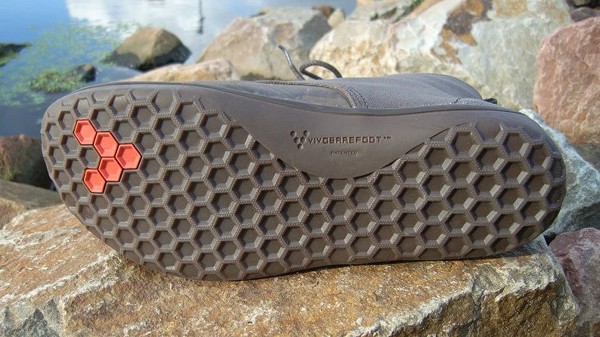
The Scott is not designed as a waterproof shoe. The tongue however has a bellowed construction to keep water out (i.e. the tongue is stitched to the uppers). The attached tongue goes almost all the way to the top. This is too high in my opinion as it makes it more difficult to put them on and take them off. The trick to getting them on is to give a gentle pull to the sides of the uppers which opens the shoe enough to get the foot in. The pull-tab is also a little too small to get my finger in and a little to smooth to grip it well between two fingers.
The woman’s version of this shoe (the Mia) is much easier to take on and off thanks to additional lacing holes and a side zipper.
The leather uppers have an Ion-Mask treatment that makes them very water repellent. Ion-Mask is a very thin and long-lasting way of protecting shoes and clothing from moisture, chemicals, stains etc.
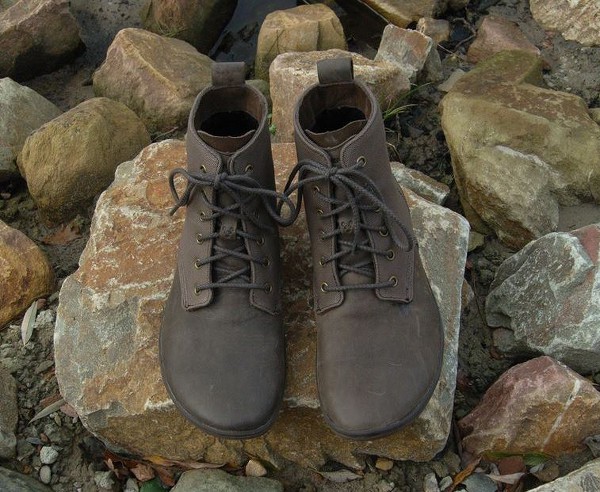
The photos show the moisture always on the leather in droplets. However, after a walk in heavy rain the whole shoe becomes wet. Once wet, the Scott’s uppers dried very, very fast except for the areas where the leather is heavily creased.
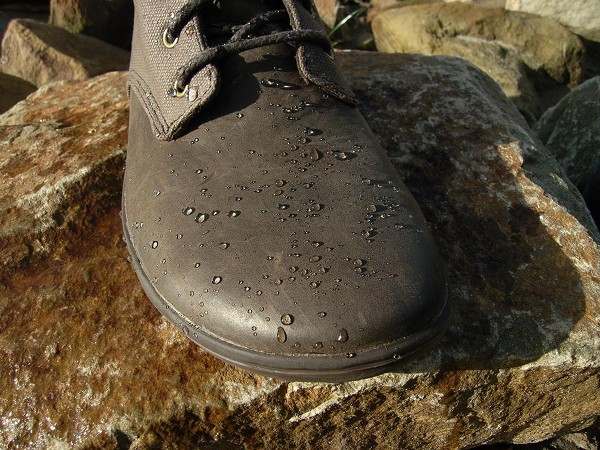
It will be interesting if Vivobarefoot decided to use Ion-Mask on all of their other winter and outdoor shoes too. VIVOBAREFOOT told me that they are experimenting with different types of water repellent coatings for next season.
The insole is very interesting because it is part of the winterproofing of the Scott. According to VIVOBAREFOOT it is a sandwich construction with two layers of heat reflecting foil, a layer of Thinsulate and a layer of foam. The insole is a small piece of engineering. I walked outside with one traditional VIVOBAREFOOT insole in my Scott’s and the winter insole in the other. When standing on the pavement I could really feel a difference. Still, it is difficult for me to determine if the insoles are really winterproof because of the relatively warm weather in my vicinity.
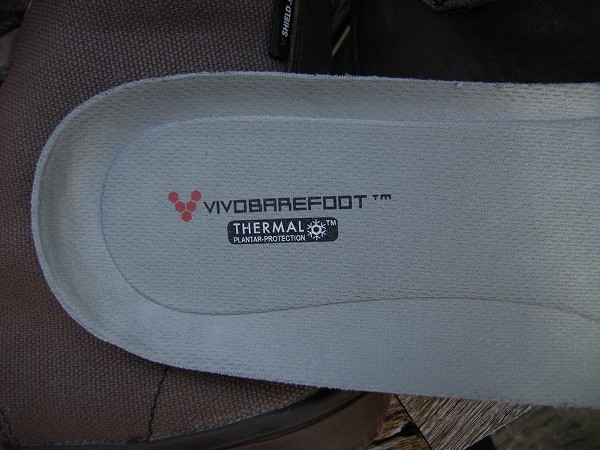
Another winterproofing feature comes in the form of a thin layer of Thinsulate insulation sewn into the shoe in the area around the ankle. This layer will help to prevent heat loss, but for very cold conditions the Scott will probably not be warm enough for me. For those conditions, I have to wear thick socks too.
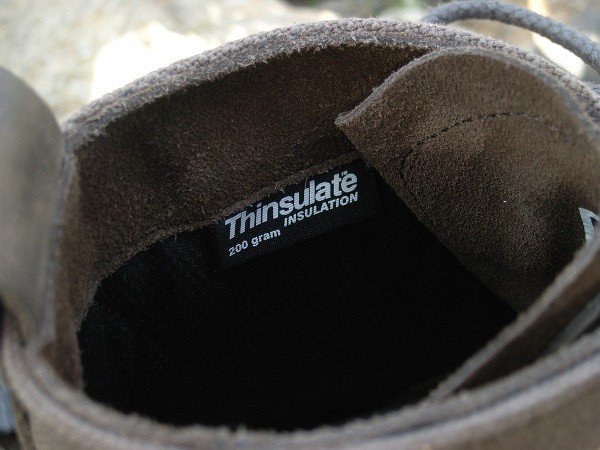
One issue that I have always had with VIVOBAREFOOT shoes are small quality problems. The Scott is no different in this regard: the leather on the uppers of both shoes are a little different in colour. There is also a small, dark stain on one shoe. But most importantly, the toebox on the right shoe has more height than the toebox of the left one. This means less wiggle room the the toes of my left foot. This was especially annoying in the beginning, but I gotten used to it.
For winter 2014 the Scott will be available in a brown and an all-black version.
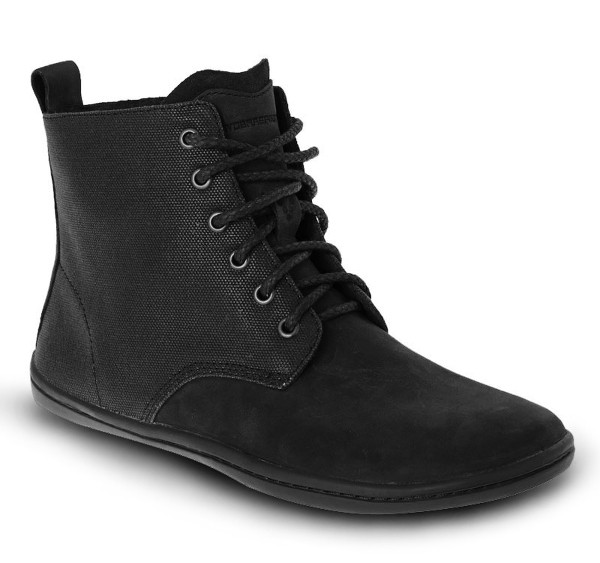
For women VIVOBAREFOOT has an hi-top model of the Gobi with a faux shearling lining instead of Thinsulate.
